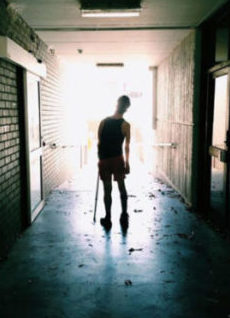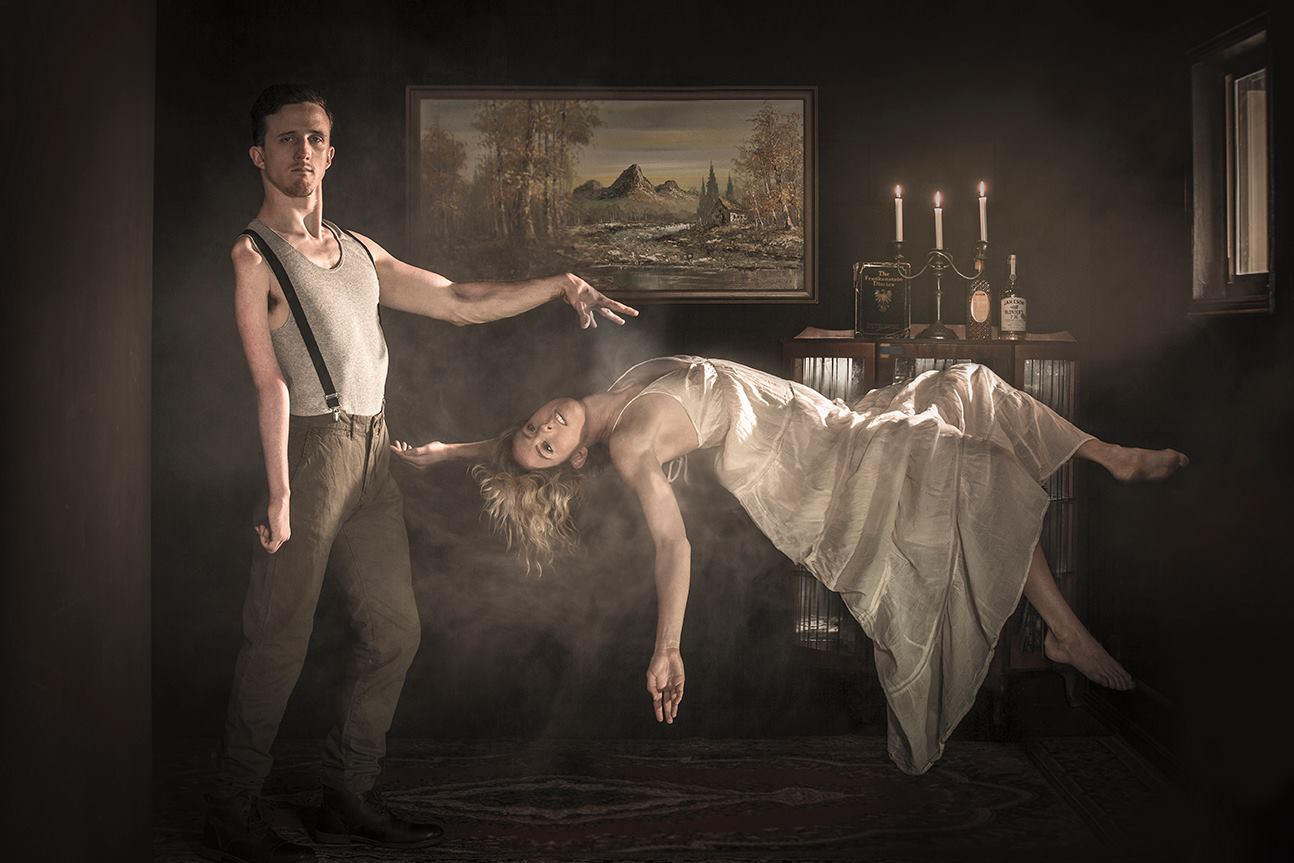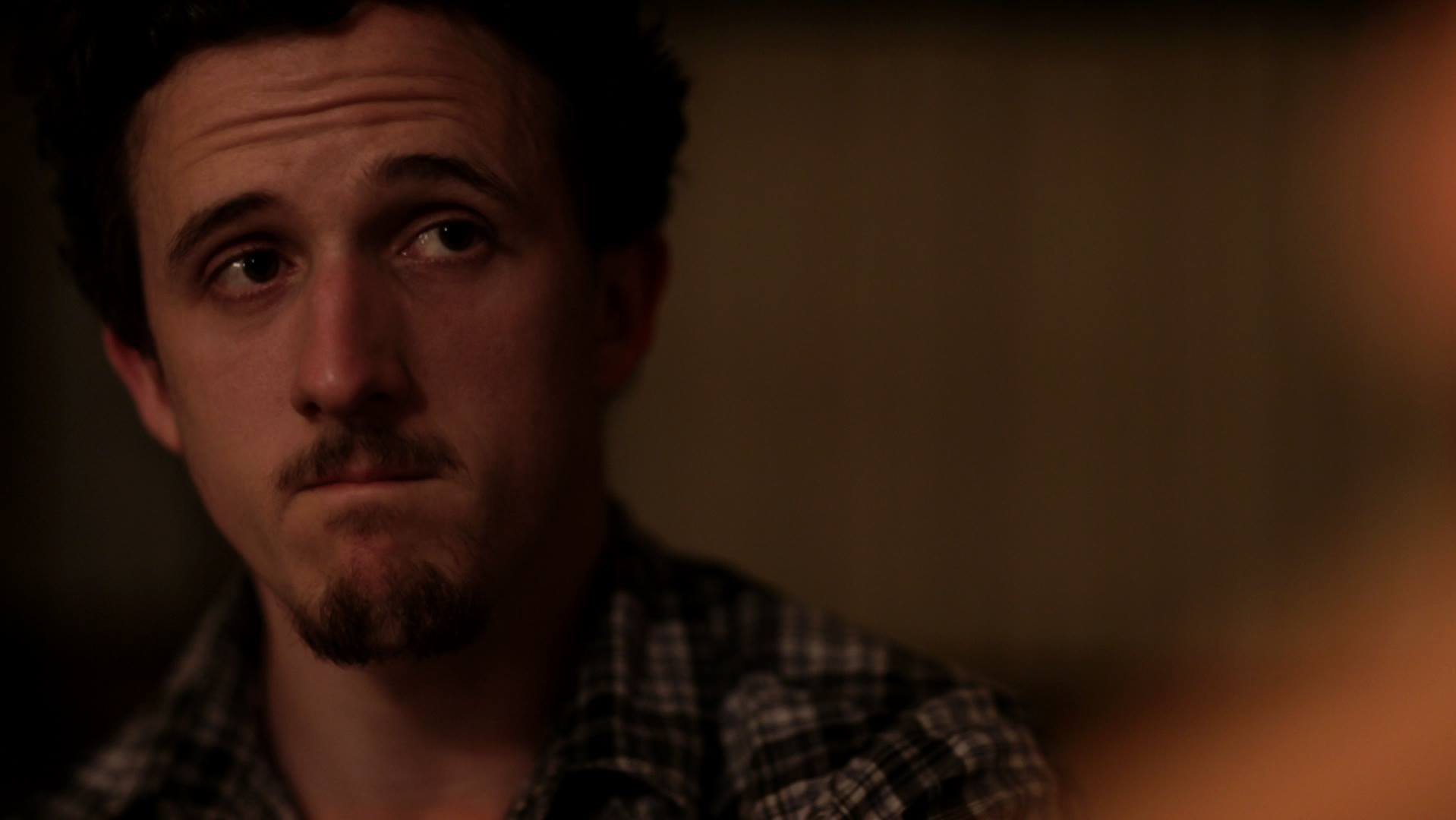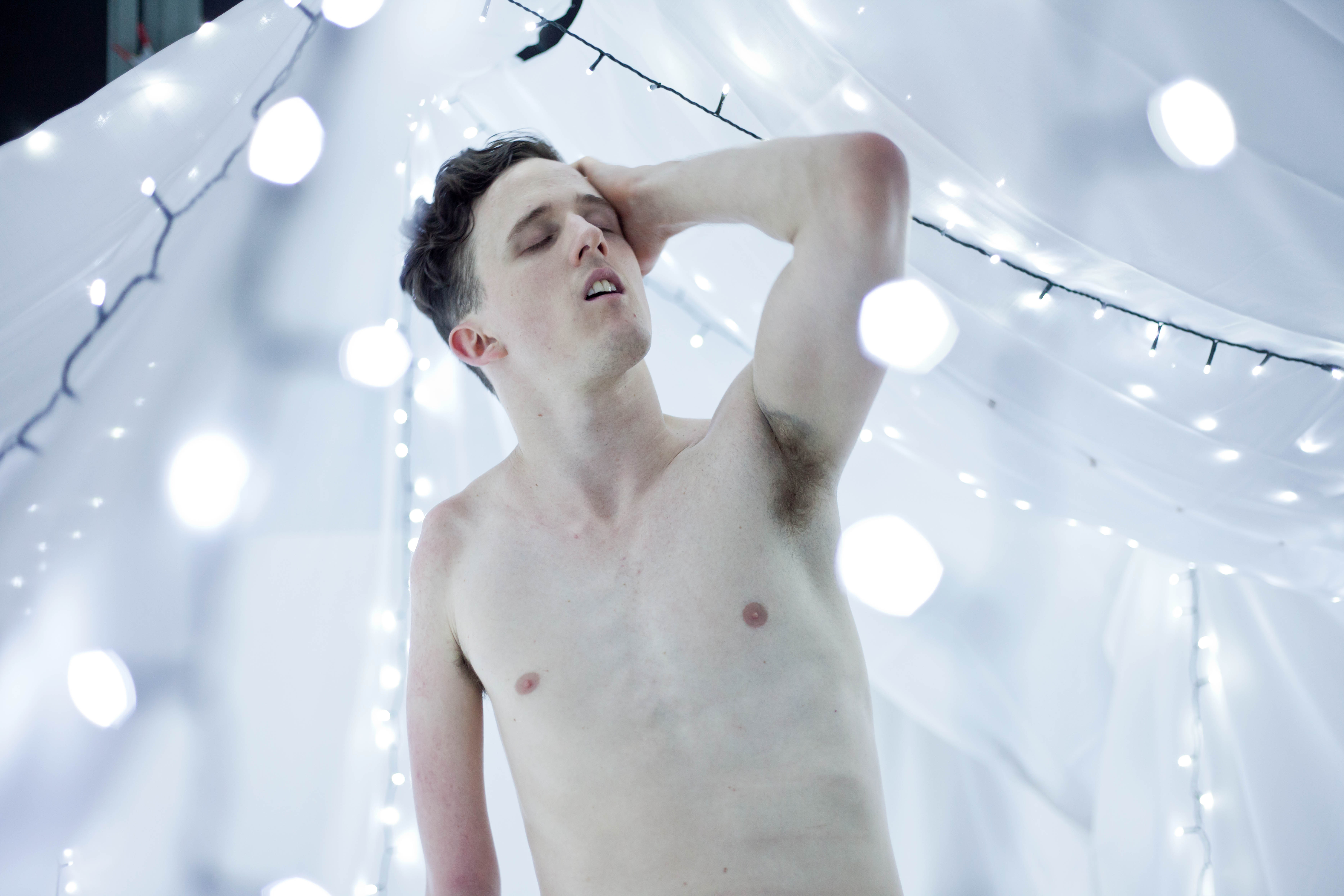“THE ACCESSIBILITY OF ACTING” by Daniel Monks

My name is Daniel Monks and I am a disabled actor.
My mother was an actress, a graduate of NIDA, and when she was seven months pregnant with me, she performed her one-woman show, From Here to Maternity. Ever since I was born, I have felt I was made to do this. I feel like my body, my mind, my heart is built for this bizarre, magical, weird thing called acting.
As a child, it was all I wanted to do and I performed every chance I could get. When I was 7, I “adapted” Peter Pan into a musical and forced my year 2 class to put it on; with myself playing Peter. Year 3 was Alice in Wonderland; with myself as the White Rabbit. Year 4, Spice Girls; Ginger. I was a flamboyant, vivacious, wonderfully ridiculous child, who seemed to have unending confidence & spunk.
Then when I was 11 years old, a tumour was discovered in my cervical spinal cord. Following complications from the biopsy test due to medical negligence, I was left temporarily quadriplegic. It took me the following 6 months to regain full function back in my left side and partial function in my right leg, with my right arm remaining paralysed to this day. The tumour was miraculously removed by the incredible Charlie Teo, and I have been neurologically stable since – but have been left with the hemiplegia & the various ailments associated with it, caused by that initial biopsy.
Going from that incredibly physical child to a freshly disabled one took the life out of me. I gave up acting, deeming that because of my disability, it would no longer be a “feasible” career path. I buried my love for it deep within me, and going into high school, was embarrassed when anyone mentioned my past performances and the child I once was.
From this, I discovered filmmaking and fervently pursued that. Following high school, I studied at AFTRS. It was only when I was turning 23 and making my own films, that I entertained the possibility of acting again. I was developing my first feature film, with a lead character based on myself, and realised that if I was ever going to act, now is the time – for nobody could play me better than me. I trained for a number of years in the lead up, and then in mid-2014, shot that feature, with the incredible director Stevie Cruz-Martin at the helm. After a lengthy post-production process, it has just begun it’s film festival journey, with it selected as the Centrepiece Presentation at the Melbourne Queer Film Festival in March 2017.
Having the opportunity to act every day for a month on that feature was invigorating in a way like no other. From there, I allowed myself to dream of the possibility of maybe acting in friend’s films as well. Then maybe auditioning for others. Then maybe acting in theatre. In dance. On television. And more & more, what I had previously deemed possible for myself & my life expanded to the point where I am currently in the fortunate position of being able to survive as a professional actor, for the time being at least.
But that is an entirely uncommon occurrence in our unfortunately inaccessible industry. To give a bit of an insight, here are the three pathways I have found in accessing work as a disabled actor.
- Firstly, is to be the creator of your own work. Like with my feature film Pulse and my short film Marrow, they were not only generated by myself from a writing standpoint, but I was also a key producer on both. This pathway has great benefits because it’s the most direct, honest expression of my work and I had creative control of the projects. This is also valuable because disabled stories told by disabled people are unfortunately rare in our industry. The huge con though is this costs money, and as anyone on the Disability Support Pension can you tell, money is something we do not have an abundance of. As well as this, to be the engine of project after project can be incredibly draining & unsustainable, especially for those whose disability effects their energy & productivity.
- Secondly, is working on projects initiated & produced by other people, but being given the opportunity to be a key collaborator in the creation of the work. Whether that’s working on a devised theatre show or developing a film with the filmmaker, this can be incredibly effective, because since you are there through its development, the project can adapt & evolve around you & your specificity as a disabled actor in an organic way. I find the majority of projects working in specifically “integrated” and disability inclusive spaces are of this kind, as it allows for the greatest amount of inclusivity amongst all the performers. This avenue does require that you have a strong working relationship with the creator though, otherwise it can be challenging.
- Thirdly, being cast in a role purely as an actor – i.e. being a jobbing actor. This is the way the majority of working abled actors are cast, and essentially means auditioning and being cast in a set role in an already written film, television show or play. This is the most challenging avenue I find as an actor with a disability, as it is once in a blue moon that there’ll be a role that will meet my physical attributes, and people are often frustratingly reticent to cast disabled actors in roles that were not written as disabled. Unfortunately though, this avenue is where the majority of paid acting work lies, hence not being able to access this makes it incredibly hard to have a sustainable career as a professional actor.
The amazing British Pakistani actor, Riz Ahmed, previously spoke about his experience as an actor who is part of a minority, which perfectly articulated my experience as a disabled actor.
He spoke about the 3 stages of a minority actor.
Stage 1
Playing the stereotype. Playing a stock character within a larger story. For Riz, he says it’s the “shopkeeper, taxi driver, terrorist”. For me, it’s playing the “disabled” character; the character whose disability is treated like a personality trait as opposed to a physical attribute. I rarely get cast in these roles, and in fact the majority of disabled people rarely do, because so often an abled actor will be cast to “act” disabled, because it’s “easier”.
On a side note, according to the Ruderman Family Foundation, 95% of characters with disabilities on screen are played by abled actors. In theory, I understand the various reasonings why an abled actor may need to play a disabled character, for example if we need to see this character before they acquired their disability. I understand that there are always exceptions that need to be made, and that operating under absolutes isn’t productive or beneficial to anyone. But to be absolutely frank, I’m fucking sick of it. Hiring abled actors for disabled roles is not currently the exception, but is overwhelmingly the norm, and it is a true rarity when a disabled actor is cast. This needs to change.
Stage 2
Playing a character where it is still “about” the minority, but it flips the stereotypical notions of what that minority is like and humanises them; creating a more real, rounded human being. My feature film Pulse does this. My short film Marrow does this, and that was part of the intention in making it. They are both films that explore disability. I’m not against stage 2 at all because authentic stories about disability are so rarely told, especially with disabled actors, that it’s vital we tell them. The disabled community have such a wealth of incredibles stories that aren’t being seen or heard, and so it’s incredibly gratifying to be a part of telling these stories authentically. But having said that, I don’t only want to tell stories about disability. There are so many more stories in the world, and so many more stories inside of me. Which brings me to:
Stage 3
Playing just a guy. A character who is disabled, but his disability is an inconsequential part of him. Not hiding or denying this part of him, but not defining him or his story by it. This is what Riz calls the “Holy Grail”, and the place I hope we as an industry can arrive at for all minorities.
It is undeniably harder to be a professional actor with a disability, and yet, there are examples of us beating the odds to do so. Bridie McKim, an actor with cerebral palsy, is currently in her second year at NIDA. Chris Bunton, an actor with down syndrome, starred in the Australian feature film Down Under. Ana Maria Belo, a deaf actor, was recently nominated for Best Female Actor in a Leading Role at the Sydney Theatre Awards for her role in Tribes. I feel it is important to note that it is not our disabilities that make it harder for us. We do not have to “overcome” our disabilities in order to be able to do our work & tell our stories. We have to “overcome” our industry’s limited perception of us and what we are capable of. And if anything, that’s a much greater challenge.
What keeps me going though, beyond my obsessive love for the work, is I know that even if it is more challenging, I will never stop because we must create a new precedent for the next generation of disabled actors & filmmakers & theatremakers & storytellers, and I want to be a part of that. If when I was 11 years old, I could’ve seen a successful disabled actor, then that would’ve changed my entire perception of what is “feasible” or not, and I never would’ve given it up. I can name all the famous disabled actors I can think of on my one functioning hand – and they are so often only ever known for one role, as opposed to having a long-term career with a breadth of opportunities.
But more than that, if when I first acquired my disability, I could’ve seen real, authentic representations of myself in the stories we as a culture tell, it would’ve changed the way I felt about my disability and the shame I experienced around it. When our bodies are seen and our voices are heard, we are telling the younger generation of disabled people that they are valid, valued members of our society, who deserve to been seen and heard in all their beauty and ugliness and humanity.
According to Screen Australia’s groundbreaking 2016 study on diversity in Australian TV drama, disabled people make up 18% of the Australian population, and yet only 4% of characters on our screens are disabled. We are the most underrepresented of all minorities.
So often as disabled people, our stories are etched on our bodies, our scars mapping our history, and yet, those stories go untold. No more.
It’s time acting become accessible, for all.
Video Links
Photo Credits
- Photo by Stevie Cruz-Martin. Promotional Image for “Pulse”.
- Photo by Claudio Kirac from Art-Work Agency. Promotional Image for “Frank Enstein” by The Farm in collaboration with Co3 Contemporary Dance Company of WA for Bleach* Festival.
- Photo by Stevie Cruz-Martin. Promotional Image for “Gravel”.
- Photo by Stevie Cruz-Martin. Promotional Image for “Marrow“.






Leave a Reply
You must be logged in to post a comment.